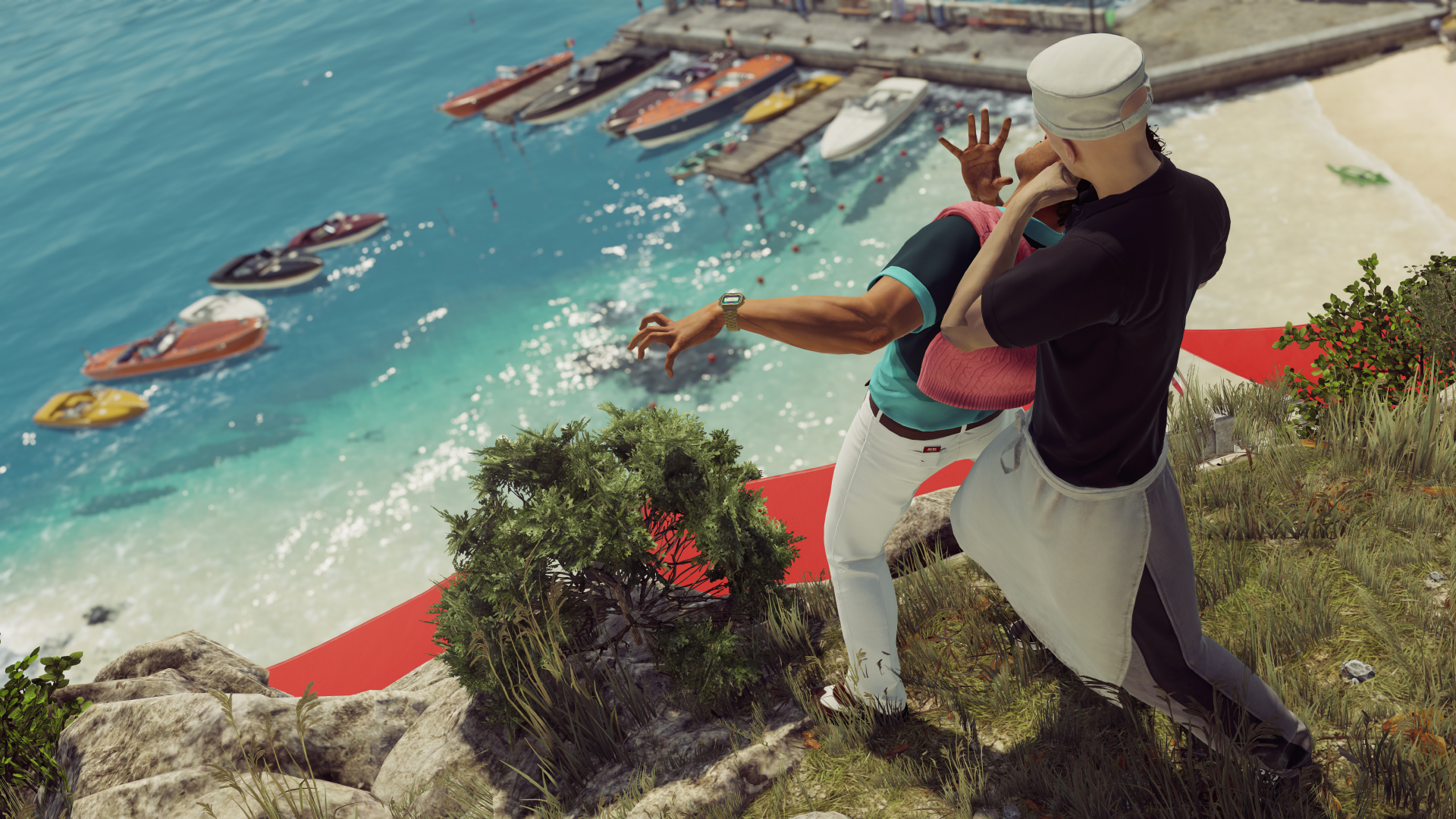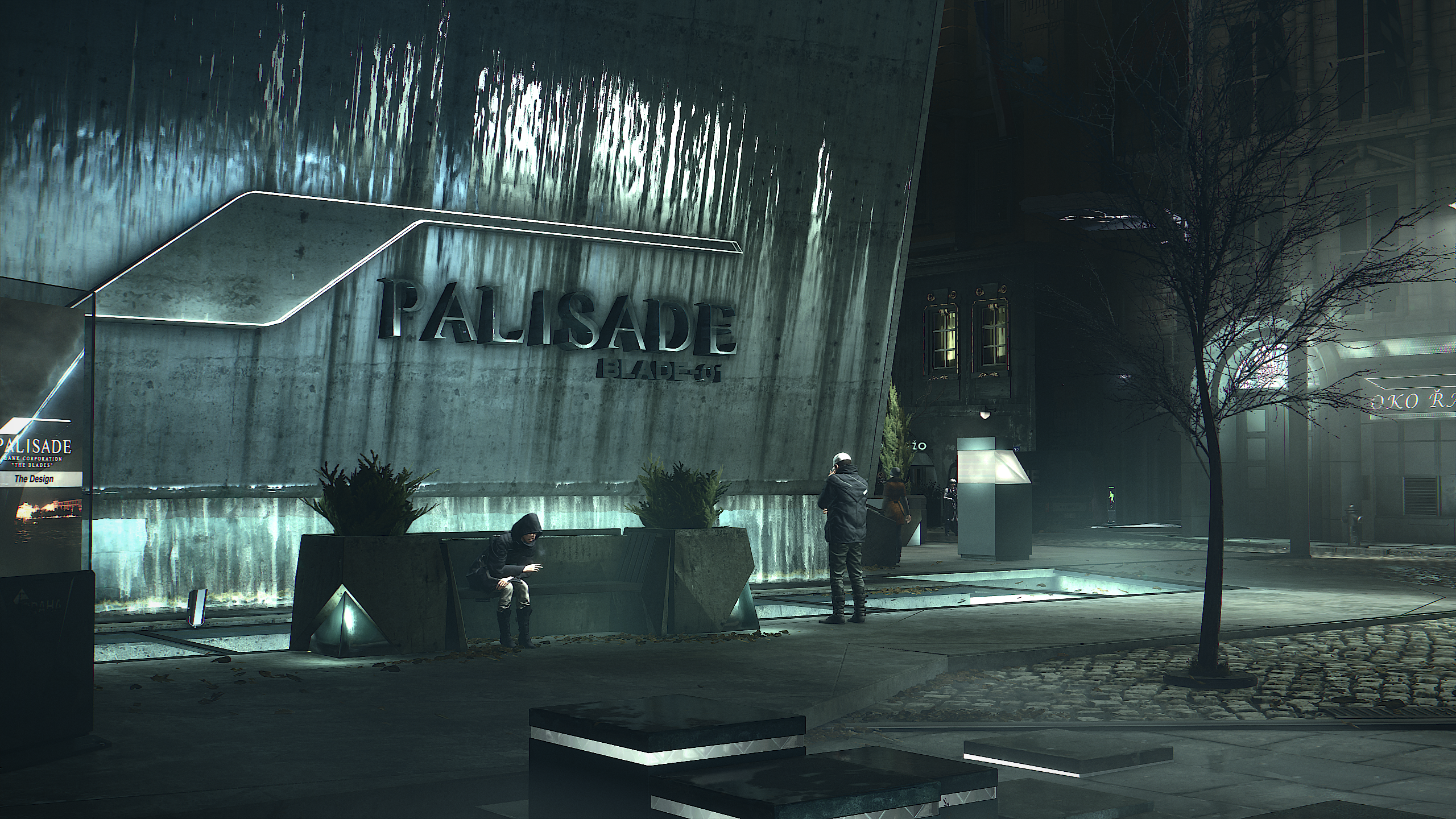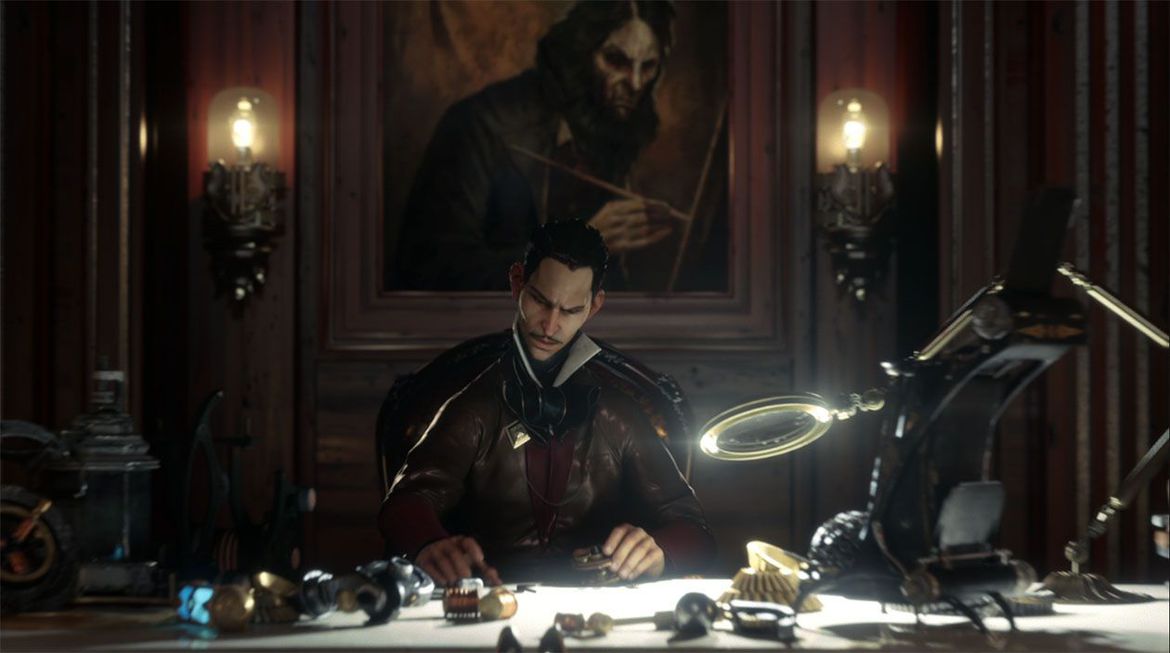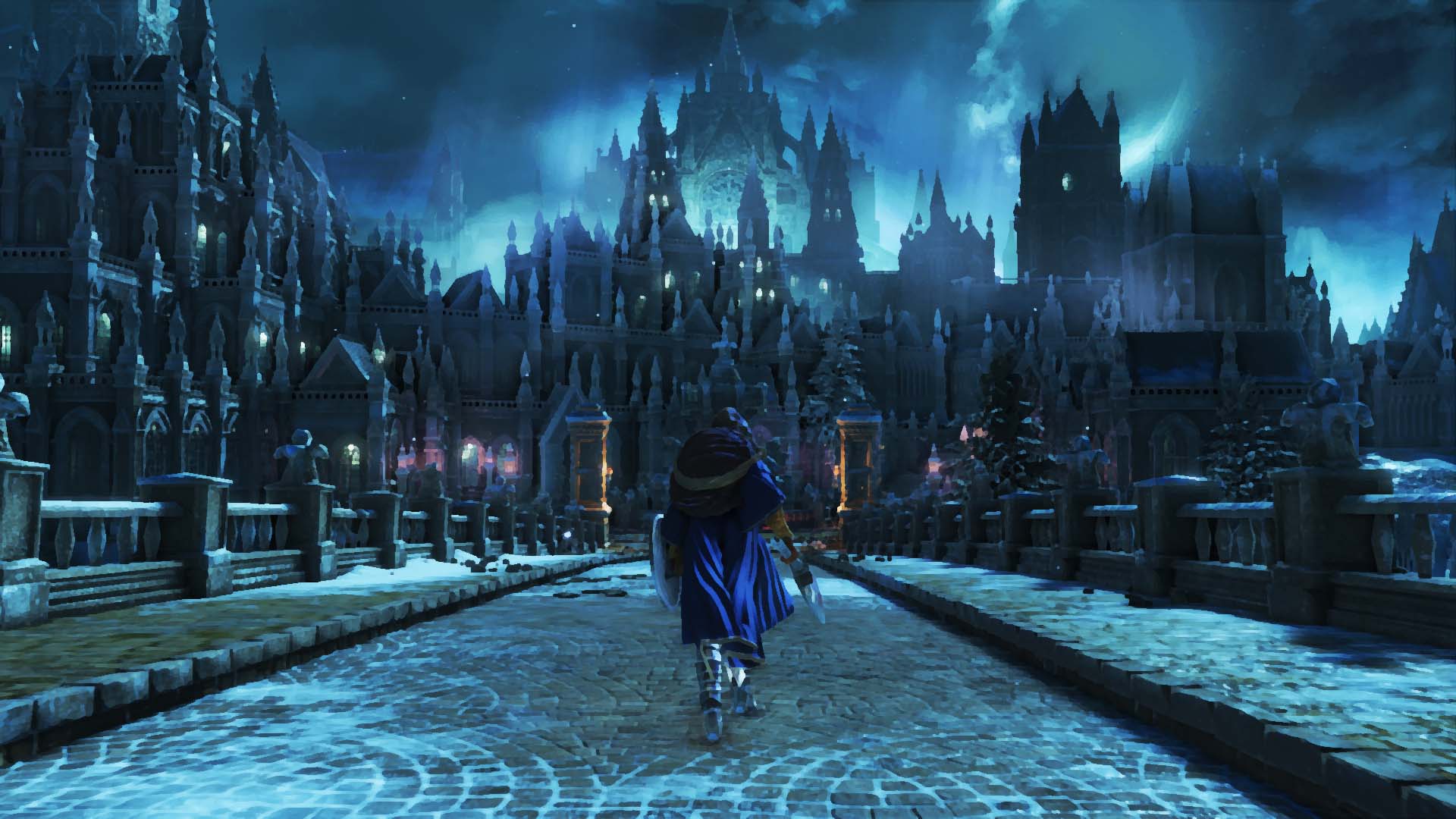
Games have sent us to some weird places in 2016. There's Mars, for a start, which served as a fine gateway to hell in the excellent Doom reboot this year. Geralt visited a technicolour fairytale wonderland in Blood and Wine, and Titanfall 2 sent us sightseeing with a big robot buddy called BT. With these moments in mind we've put together a whistle stop tour of the cleverest, most spectacular levels of the year. Let's start with the sunny shores of Italy.
Sapienza, from Hitman
This was the level that convinced us IO's Hitman experiment was working. Sapienza's colourful, tropical look is based on Italy's Amalfi Coast, and compared to the more controlled elements of the crowd-heavy Paris level, it feels like classic Hitman—except with an unprecedented level of environmental detail. Have you seen the ice creams in the ice cream shop at the start? Seriously, IO made every flavour in there. It's crazy. Sapienza has a gorgeous beach, a church and a few other interiors explore alongside the mansion where your target, Silvio Caruso, resides.
For me, a classic Hitman level encourages winging it on your first time through based on whatever you can find on the way to your objective. On subsequent playthroughs, the levels begin to feel more like puzzle boxes, where you experiment with various possibilities to achieve the result you want—that careful mastery is fundamental to Hitman. Here, it might be using an exploding golf ball to kill Caruso, or dropping a chandelier on him, or even blowing his plane out of the sky while he's trying to escape (confession time—I never did that last one because I'm not amazing at Hitman but a walkthrough shows me it's possible. What a game!). Sapienza marked the true rebirth of Hitman, and became the high watermark for the rest of this excellent episodic series.—Samuel Roberts
The Palisades Bank, from Deus Ex: Mankind Divided
This monolithic puzzle box sits in the corner of the game’s Prague hub. A few missions are set there, but almost all of the building is accessible from the moment you walk out of your apartment. In many ways it is the definitive Deus Ex level. There are vents everywhere; keycards; terminals to hack, but the sheer size and density of the place exceeds Deus Ex levels that have gone before. There are few objectives as intriguing as a sealed bank vault, and the bank contains multiple chambers that demand top-level clearance.
Rooms guarded by criss-crossing laser sensors and robots provide some challenge if you accidentally trigger an alarm, but barging in throwing grenades everywhere will rob you of the quiet thrill of the heist. Trying to rinse this place while staying hidden has given me some of the most tense moments of the year, particularly when I was rumbled during in a chat convo on one of the bank’s office computers. I still remember the sudden sense of dread I experienced when I saw the message: “stay there, I’m sending guards to your location.” I have never fled a location so quickly.—Tom Senior

Effect and Cause, from Titanfall 2
It’s hard to talk about the appeal of this level without spoiling its central conceit, so if you’re worried about spoilers, look away now. Titanfall 2’s singleplayer campaign is adept at pacing your progress by pushing you between mech and lone pilot scenarios, but once it has taught you your capabilities, the game starts adding exciting new stuff. The self-assembling battle chamber first suggests that there might be more ideas hiding away in Titanfall 2’s singleplayer campaign than the game initially lets on. Then you wallrun into Effect and Cause, set across two time zones in one facility, which you can flip between instantly with a button press.
The transition between wild wolf-infested ruin and pristine heavily guarded human fortress is instantaneous. There are a few straightforward puzzles involving flaming corridors but the real fun happens in combat To the befuddled guards you seem to materialise, shoot some ment dead, vanish, and then reappear somewhere else. When you flip to the wolf dimension, events continue to play out in parallel in the past, so when you reappear they are still spinning in confusion. This brutal power imbalance escalates with the involvement of your titan in a time-warping finale that caps off this short but perfectly-formed shooter level. Brilliant ideas, flawlessly implemented. —Tom Senior
The biggest gaming news, reviews and hardware deals
Keep up to date with the most important stories and the best deals, as picked by the PC Gamer team.
The Clockwork Mansion, from Dishonored 2
Dishonored’s world is built on the creations of charismatic inventors. The brassy, insecure Kirin Jindosh expresses his warped personality through intricate clockwork architecture. His genius is on display in the golden lobbies of his estate, but this garish facade is sustained by a grubby warren of maintenance shafts. Hunting him down through his own maze feels personal, partly because of that sense you’re exploring an architectural manifestation of his ego, but also because he taunts you through a window at the start—this seems to happen a lot in immersive sims, but it always works. Speedy players have discovered that you can dodge through a few shortcuts and kill him mid-rant at this early stage. That degree of flexibility is what makes Dishonored great, and that’s what the clockwork mansion is all about.
Few levels give you control of their layout, so it’s empowering to flip a switch and watch rooms rearrange themselves. You also get the Portal-esque thrill of slipping between the machinery to vanish from Jindosh’ surveillance equipment—there’s even an achievement for getting to him unseen. As you move through each ostentatious room, you learn a little more about the man behind the maze. He has a severe case of anxiety of influence which compels him to keep Dishonored 1’s great inventor, Anton Sokolov, jailed in a shifting array of corridors guarded by a deadly automaton. This little prison maze is a megalomaniac demonstration of his intellectual superiority that’s really fun to crack—a microcosm of the clockwork mansion as a whole. —Tom Senior

Lazarus Labs, from Doom
When I describe why Lazarus Labs was the best level of 2016's Doom reboot, it doesn't sound like there's a lot of difference between it and other levels. Exploring this sprawling futuristic setting is punctuated by brilliant, multi-level set pieces featuring waves of demons—see? This could basically be any level. The ninth mission is the best paced of them all, though, with a memorable sprint through a demon-infested chapel, complete with a pretty great Cyberdemon boss fight at the end. By this point in the game, your arsenal is modded exactly the way you want it to be, and you feel almost in complete control of every combat scenario. The Cyberdemon fight felt more empowering than annoying as boss encounters go. Hell of a game, but this level was a true standout for me. —Samuel Roberts
Beyond Hill and Dale, from The Witcher 3: Blood and Wine
The Witcher 3’s gallic-flavoured final expansion already represented something of a tonal departure. Those preening knights and idyllic Toussaint countryside are a far cry from the slums of Novigrad and the unwanted ministrations of the Wild Hunt. But of course behind all that sunshine and expensive booze lurks a grim, vampiric murder mystery to provide Geralt his perfect send off. With this DLC, we also find a CD Projekt operating without any creative shackles. And so to the riot that is the Beyond Hill and Dale quest. Here our hero finds himself inside a children’s book, exploring a fairytale world whose inhabitants have run amok thanks to neglect.
As Geralt follows the Yellow Brick Road, (on a unicorn, obviously) he fights the Wicked Witch, discovers how Longlocks met her unfortunate end, plants some magic beans and… Well, you get the picture, and what a pretty one it is too. The Land of a Thousand Fables is all azure skies, oversized mushrooms and giant rainbows. Which provides quite the backdrop for the weirdest sex scene in The Witcher 3, and that’s not an accolade given lightly. Beyond Hill and Dale is such an unexpected, odd, fun diversion, that in the end you almost don’t want to leave. Which is both the point of fairytales, and the best games. —Tim Clark
Irithyll of the Boreal Valley, from Dark Souls 3
This glittering wintry city is the most beautiful place in Dark Souls 3, and one of the deadliest—the enormous four-legged beast that attacks you on the bridge just the start. The rest of the city is haunted by shrivelled spirits and fallen knights. Irithyll is the spectral afterimage of a once-proud society. The enormous moon gives the place its silvery sheen, and is an important thematic totem in the Dark Souls universe.
It’s not just pretty. It’s a Dark Souls level, so it’s a winding labyrinth of secrets and strange creatures. Instinctively I climbed upwards past the dead swordsmen to the next bonfire the first time I visited, but I later realised you can find your way down to the riverbed below the enormous access bridge. If you fled from the beast instead of fighting him earlier, he leaps down to attack you here. For veteran fans of the Dark Souls series there is a great moment when you learn exactly where you are, and what the cold, dead city represents. —Tom Senior

Bank Shot, from Quadrilateral Cowboy
The last mission is technically a more interesting and varied level, but Bank Shot gave me the most memorable moments of Quadrilateral Cowboy. You have to steal three safes from three banks, which tower over an abyss. You have to place and angle jump pads to span the wide gaps between each tower, and then use your deck and tiny dog drone to infiltrate the vaults. If you trip an alarm roaming blimps will rocket you to death. This, combined with the sheer drop, makes the whole thing feel precarious.
It’s also hilarious. Soon you’re using jump pads to bounce heavy safes to safety, setting off alarms, accidentally dropping your deck into the foggy depths below. Bank Shot adds a slapstick element to Quadrilateral Cowboy’s clever hacking puzzles—a winning combination. —Tom Senior
Young Men's Work, from Battlefield 1
Battlefield 1 takes a scattershot approach to mission design—its War Stories campaign taking us from a harrowing look at the World War 1 machine, to a lighthearted, heroic romp through the skies. By switching up the structure, DICE was free to experiment with tone, style and approach. Young Men's Work is a great level not for the design of its environment, but for the nature of its challenge.
It's a sandbox mission that forgoes scripting. Playing as the Bedouin rebel Zara, you're tasked with infiltrating three command posts of varying size and strength. Placed in the middle of the map, you're free to carry out this task in any way you see fit—be it stealth, carnage, or an escalating progression of weapons and vehicles. Set against the more linear levels, Young Man's Work stands out as the more interesting, systemic approach. It's not the most beautiful, surprising or even emotional of Battlefield 1 missions, but it is one of the most atmospheric. —Phil Savage
Into The Abyss, from Titanfall 2
Yes, I know we’ve picked one already, but Titanfall 2 runneth over with ridiculously good level design. The high concept here is as literal a splicing of shooter and platformer as I can remember. Having been separated from BT (something it’s best to get used to), the pilot must hop, shoot and jump his way around a giant assembly line complete with vertiginous drops and crushing hazards. You are effectively bouncing around the insides of a working machine while people shoot at you. And given a choice between the two, the goons are much less of a problem than the environment.
The other antagonist during Into the Abyss is Ash, the sexy deathbot of the Apex Predator mercs. Towards the start of the level her boss, Blisk, reprimands her for using the facility as a playground. But that’s exactly what it is, albeit one which health and safety inspectors have never visited. The factory-as-obstacle isn’t a onenote idea, either. As you travel along the line, so it becomes clearer that what’s being built are entire pre-fabricated towns, trees and all. Near the end you’re forced to make a surreal, upwards climb through the frames of partially-constructed houses positioned at dizzying angles. At the top you find the inevitable boss battle against Ash, which of course happens in a completed ersatz town.
For astonishment value, I’d go with Effect and Cause as the single best thing in Titanfall 2 but in terms of pure level design, and delivering on the acrobatic gunplay theme, Into The Abyss might be better. And as it came earlier in Titanfall 2’s running order, it was the first time it hit me that this isn’t so much a traditional shooter campaign, but a selection box of differently-flavoured treats to experience once before eagerly moving on to the next. —Tim Clark
The collective PC Gamer editorial team worked together to write this article. PC Gamer is the global authority on PC games—starting in 1993 with the magazine, and then in 2010 with this website you're currently reading. We have writers across the US, UK and Australia, who you can read about here.


